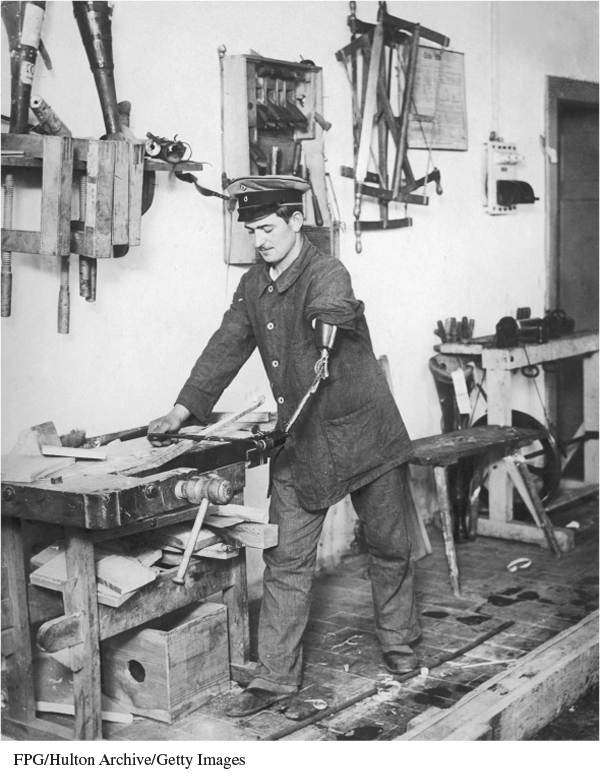The Human Costs of the War
World War I broke empires, inspired revolutions, and changed national borders on a world scale. It also had immense human costs, and ordinary people in the combatant nations struggled to deal with its legacy in the years that followed. The raw numbers are astonishing: estimates vary, but total deaths on the battlefield numbered about 8 million soldiers. Russia had the highest number of military casualties, followed by Germany. France had the highest proportionate number of losses; about one out of every ten adult males died in the war. The other belligerents paid a high price as well (Figure 25.1). Between 7 and 10 million civilians died because of the war and war-

862
The number of dead, the violence of their deaths, and the nature of trench warfare made proper burials difficult, if not impossible. Soldiers were typically interred where they fell, and by 1918 thousands of ad hoc military cemeteries were scattered across northern France and Flanders. When remains were gathered, the chaos and danger of the battlefield limited accurate identification. After the war, the bodies were moved to more formal cemeteries, but hundreds of thousands remained unidentified. British and German soldiers ultimately remained in foreign soil, in graveyards managed by national commissions. After some delay, the bodies of most of the French combatants were brought home to local cemeteries.
Millions of ordinary people grieved, turning to family, friends, neighbors, and the church for comfort. Towns and villages across Europe raised public memorials to honor the dead and held ceremonies on important anniversaries: on November 11, the day the war ended, and in Britain on July 1, to commemorate the Battle of the Somme. These were poignant and often tearful moments for participants. For the first time, many nations built a Tomb of the Unknown Soldier as a site for national mourning. Memorials were also built on the main battlefields of the war. All expressed the general need to recognize the great sorrow and suffering caused by so much death.
The victims of the First World War included millions of widows and orphans and huge numbers of emotionally scarred and disabled veterans. Countless soldiers suffered from what the British called “shell shock” — now termed post-

The German case is illustrative. Nearly 10 percent of German civilians were direct victims of the war in one way or another, and the new German government struggled to take care of them. Veterans’ groups organized to lobby for state support, and fully one-